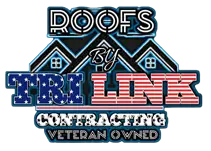Introduction
Taking Sides: A ‘Panel’ Discussion on Siding Installation Techniques
When it comes to the exterior of your home, you want siding that not only looks great but also stands the test of time. That’s where proper siding installation techniques come into play. In fact, according to the latest report by the U.S. Census Bureau, vinyl siding continues to be the most popular choice for new single-family houses, making up about 26% of the market based on their siding installation techniques.
In this article, we will explore the fascinating discussion surrounding siding installation techniques and uncover some expert tips and tricks along the way. Whether you are a homeowner looking to tackle a DIY project or a professional contractor seeking to enhance your skillset, come with us as we delve into the world of panels and transform your home today!
The Importance of Proper Siding Installation Techniques
Why is it Important?
Proper siding installation techniques can make a world of difference when it comes to durability and longevity. According to the National Association of Home Builders, using these techniques can help sidings last for up to 60 years, depending on the material used. This means investing in quality installation now can save you time and money in costly repairs down the road.
The Impact on Appearance
Not only does proper installation impact how long your siding lasts but also its overall appearance. The Vinyl Siding Institute emphasizes that vinyl siding installation techniques should consider natural expansion and contraction of materials in order to prevent warping and distortion. By following these guidelines, you can ensure that your home maintains its beautiful curb appeal for years to come.
Increasing Energy Efficiency
Another benefit often overlooked is energy efficiency. When done correctly, modern siding installation methods like adding an insulating underlayment can significantly reduce heat loss from inside your home, making it more energy-efficient and reducing your utility bills.
The Role of Siding Contractors
While DIY projects can be tempting, hiring professional siding contractors is crucial to ensure the job is done right. Their expertise and experience will guarantee that all necessary steps are taken to achieve optimal results. So, when considering a siding installation project, be sure to reach out to reputable professionals who understand the importance of proper techniques.
Panel Discussion: The Five Steps for Effective Siding Installation Techniques
Step 1: Material Selection
Choosing the right siding materials is crucial for successful installation techniques. Factors such as climate, durability, maintenance requirements, and aesthetic preferences play a significant role in making an informed decision. With a wide range of options available today – from vinyl and fiber cement to wood and metal – do thorough research before finalizing your choice.
Step 2: Surface Preparation
Before installing new siding panels, preparing the surface properly ensures long-term success. This step involves removing any existing cladding or damaged areas on your walls. Additionally, inspecting for rot or mold issues helps address these underlying problems before moving forward with installation.
Step 3: Proper Flashing Installation
Flashing refers to thin pieces of waterproof material installed around windows, doors, corners, and other vulnerable points on your exterior walls. Its purpose is essential – redirecting water away from these areas to prevent moisture infiltration. Installing flashing correctly maximizes protection against potential leaks while ensuring overall structural integrity.
Step 4: Precise Cutting and Fitting
One critical aspect often overlooked during siding installation is precise cutting and fitting of panels. Investing time in measuring accurately ensures a seamless appearance without noticeable gaps or uneven edges once everything is complete. Remember that details matter!
Step 5: Secure Attachment
The final step in effective siding installation techniques is secure attachment. Nails or screws should be driven into the studs of your home’s exterior, providing stability and preventing your siding from being easily dislodged by harsh weather conditions.
FAQs: Your Top Questions About Siding Installation Techniques Answered
Q: Can I install new siding over my existing cladding?
Yes, in some cases. However, it’s crucial to inspect the condition of your existing cladding before making a decision. If it is severely damaged or has issues like rot or mold, it is generally recommended to remove it entirely for proper installation.
Q: How often should I repaint my siding after installation?
It depends on the material used for your siding. For vinyl siding, repainting isn’t necessary as its color goes through the entire thickness of the panel. Other materials may require repainting every 5-10 years depending on environmental factors and quality maintenance.
Q: Can I install siding myself without any prior experience?
While DIY projects can be enjoyable and cost-effective, installing sidings requires specific knowledge and skills to ensure optimal results. Hiring professional contractors with expertise in proper installation techniques will save you time, effort, and potential headaches down the line.




